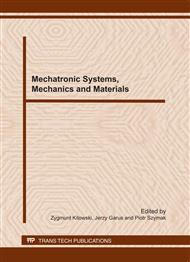p.288
p.297
p.303
p.313
p.323
p.331
p.339
p.349
p.355
Model of Propeller for the Precision Control of Marine Vehicle
Abstract:
This paper describes mathematical models of propeller thrust and torque. The models are traditionally based on steady state thrust and torque characteristics. These characteristics usually are obtained in model towing tanks. Often experimental results are showed that these quasi steady state models do not accurately describe the transient phenomena in a thruster of the marine mechatronic system. Nowadays papers published in conference proceedings includes dynamic models usually was based on the experimental observations. Describing zero advance speed conditions accurately, this model however does not work for a marine vehicle at nonzero relative water speed. This paper derives a dynamic model of propeller that includes the effects of transients in the flow over a wide range of sea operation. The results of this trials are essential for accurate thrust control in precise control of marine vehicle.
Info:
Periodical:
Pages:
323-330
Citation:
Online since:
November 2011
Authors:
Keywords:
Price:
Сopyright:
© 2012 Trans Tech Publications Ltd. All Rights Reserved
Share:
Citation:


